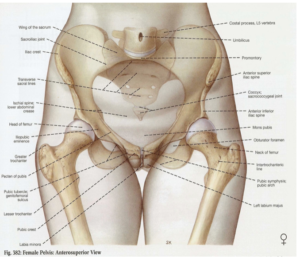
Post-partum hemorrhage (PPH) is a serious complication that can occur after childbirth, characterized by excessive bleeding from the uterus. It is a leading cause of maternal mortality worldwide and requires prompt recognition and management to prevent life-threatening consequences.
Definition and Causes
- Definition: PPH is defined as blood loss of 500 ml or more within the first 24 hours after birth.
- Causes:
- Uterine atony (failure of the uterus to contract adequately)
- Placental abnormalities (retained placenta, placenta accreta, etc.)
- Genital tract trauma (lacerations, uterine rupture, etc.)
- Coagulation disorders
Risk Factors
- Maternal Factors:
- Multiparity (having multiple previous births)
- Obesity
- Uterine fibroids
- Placental abnormalities (placenta previa, placental abruption)
- Coagulation disorders
- Intrapartum Factors:
- Prolonged labor
- Augmentation of labor
- Operative delivery (cesarean, forceps, vacuum)
Pathophysiology
The normal physiological process after delivery involves the uterus contracting to expel the placenta and close off the blood vessels, preventing excessive bleeding. In PPH, this process is disrupted, leading to continued bleeding.
The key mechanisms involved in PPH include:
- Uterine Atony:
- Failure of the uterus to contract adequately, leading to persistent bleeding from the placental implantation site.
- Causes may include uterine fatigue, overdistension, infection, or medications.
- Placental Abnormalities:
- Retained placental tissue or placental accreta (abnormal placental attachment to the uterine wall) can prevent the uterus from contracting effectively.
- Genital Tract Trauma:
- Lacerations, uterine rupture, or other injuries to the genital tract can cause bleeding that is difficult to control.
- Coagulation Disorders:
- Underlying bleeding disorders or consumption of clotting factors during prolonged labor can impair the body’s ability to clot and stop bleeding.
Clinical Presentation
- Symptoms:
- Excessive vaginal bleeding
- Tachycardia (rapid heart rate)
- Hypotension (low blood pressure)
- Pallor
- Dizziness or lightheadedness
- Confusion
- Signs:
- Visible or palpable uterine atony (soft, boggy uterus)
- Ongoing vaginal bleeding
- Decreased urine output
- Altered mental status
Management
The management of PPH involves a systematic approach to identify and treat the underlying cause, as well as supportive measures to stabilize the patient.
- Initial Management:
- Call for help and activate the PPH protocol
- Assess vital signs and provide oxygen, IV fluids, and blood products as needed
- Perform uterine massage and administer uterotonic medications (e.g., oxytocin, misoprostol)
- Identification and Treatment of Underlying Causes:
- Assess for uterine atony, placental abnormalities, or genital tract trauma
- Perform bimanual uterine compression, uterine balloon tamponade, or surgical interventions (e.g., uterine artery ligation, hysterectomy) as needed
- Supportive Care:
- Monitor vital signs and fluid balance
- Administer blood products (packed red blood cells, fresh frozen plasma, platelets) as indicated
- Maintain normothermia and correct coagulopathy
- Prevention:
- Actively manage the third stage of labor to facilitate placental delivery
- Administer prophylactic uterotonic medications (e.g., oxytocin) after delivery
- Identify and address risk factors during prenatal care
Complications
- Acute Complications:
- Shock
- Organ dysfunction (e.g., renal, hepatic)
- Disseminated intravascular coagulation (DIC)
- Maternal death
- Long-term Complications:
- Uterine scarring
- Infertility
- Increased risk of placental abnormalities in future pregnancies
Prevention and Education
- Educate pregnant women and their families about the risk of PPH and the importance of seeking prompt medical attention for excessive bleeding.
- Encourage early recognition and management of risk factors during prenatal care.
- Implement standardized protocols and training for the management of PPH in healthcare settings.
- Promote the use of prophylactic uterotonic medications and active management of the third stage of labor.
By understanding the pathophysiology, risk factors, clinical presentation, and management of post-partum hemorrhage, healthcare providers can improve maternal outcomes and reduce the risk of this life-threatening complication.





